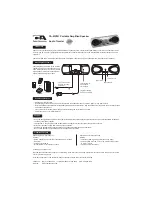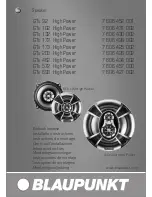
4
SYSTEM SETUP
Overall system setup is crucial to avoid unnecessary room acoustic interaction. A
room’s natural acoustics may alter the sound level at various frequencies due to
abnormal dampening or reflections. Follow the checklist below for more details.
9
The system setup (studio monitors and work table) should be placed within the
front 1/3 of the room. Doing so will reduce reflection buildup of peak frequencies.
9
The left and right sides of the system setup should be centered an equal distance
from the left and right walls. This will produce even mid and low frequency
response and preserve stereo imaging.
9
Avoid a listening position (your ears) that is closer than 1 meter (3 feet) from any
wall. Also avoid large objects (such as lamps or decorations) near the studio
monitor and listening position.
9
Diffusers and absorption material in the corners and back of a room will help
remove room interaction by preventing reflections.
9
Carpeting will help prevent reflections from hard floor surfaces.
9
Studio monitor isolators (foam or rubber pads) will help remove low frequency
coupling between the stands and desk. Low frequency coupling will cause the
stand or desk to vibrate causing unwanted sounds.
9
A low noise floor (no outside interference from refrigerators or fans) is important
to prevent the masking of low frequency detail. Rattles due to studio monitor
playback should be removed as well.
W
ithin the system setup, the studio monitors and listening placement should be
positioned in a near field configuration as follows:
The left and right studio monitors should be
approximately 1 to 1.5 meters (3 to 5 feet) apart and
directed at a 60 degree angle towards the listening
location. Measure the distance between the left and
right studio monitors and note the listening position is
equal distance to both sides. This will form an
equilateral triangle. It is important that both left and
right studio monitors are level matched.
The ROKIT is a two-way studio monitor with a tweeter
(producing high frequencies) and a woofer (producing
mid and low frequencies) in one enclosure. In between
the tweeter and woofer is the acoustic axis point
where the full frequency range comes together. The
ideal location for the acoustic axis point is located at
ear level in the listening position. It is acceptable to
angle the studio monitors so the acoustic axis is in the
correct direction.



























